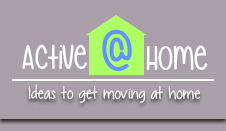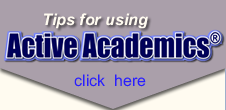Using Active Academics®
Active Academics® has been developed by teachers for teachers. It is designed to help teachers offer more activity opportunities for students while still teaching core content in the regular classroom environment. Teachers can use Active Academics® ideas for moving breaks throughout the day, to add activity to content area lesson or to give students a constructive recess or lunchtime activity.
Teachers can also contribute to the activity database and share those ideas that you have been using for years! We value the experiences of quality teachers and want this website to be a tool for sharing those great ideas.
Below you will find documentation that will help you get the most out of Active Academics®
Movement Integrated in Active Learning
Integrating movement in the learning process draws on the research supported idea that students learn better when they are active in the learning process through hands-on activities and applying the principles of inquiry, discovery, investigation and interpretation. Integrating physical activity into the classroom environment gives students an opportunity to increase their heart rate and thus blood flow to the brain allowing them to become more alert and engaged in the learning process.
Classroom Energizers allow for short activity breaks from the regular classroom structure that can be done in a small classroom area, often times right by the students' desks. Movement activities that get children up and moving at a moderate to vigorous level for five to ten minutes will help too.
Sound instructional practices for delivering short physical activity breaks from the academic instruction include:
- Short, simple instructions (or previously taught skill)
- Organized management skills that allow students to quickly form groups, get equipment, prepare to move, get back in the learning mode, etc.
- All children are moving simultaneously
- Activity is developmentally appropriate for most children (skill, attention, and interest levels)
- Appropriate for the classroom space available
- Use of music to accompany activity (see Equipment Needed)
Recess and Outdoor Unstructured Play
All children need opportunities for moderate to vigorous unstructured play during the school day. The National Association for Sport and Physical Education (NASPE) recommends that all elementary school children be provided with at least one daily period of recess of at least 20 minutes in length. Recess should allow the children time to move freely, make personal choices in the play activity in which they engage.
Teachers should provide a variety of activity opportunities during a recess period. It is important to have available different types of equipment and activities from which to choose. It is best to offer a variety of games and activities that have been previously learned by the children that can be done alone or in a small group organized by the children
A quality recess experience takes into account these instructional practices:
- Recess should not take the place of a structured physical education program
- Recess should not be viewed as a "reward" - students should not be denied recess as a means of punishment or to complete class work
- Children must practice positive personal and social skills (cooperation, conflict resolution, etc) during recess
- Space and equipment should be adequate and safe
- Safety rules must be taught and practiced
- Recess should not be scheduled immediately before or after physical education class
Many of the activities in Active Academics® take into account the small space available in a classroom setting. However, many of the recess/lunch break ideas require a large play area or gym. Each lesson idea is designated with an icon indicating the most appropriate activity space. The lesson activity can be adapted as needed for the play space available.
![]()
Most activities require no (or very little) equipment. If equipment is required, it is likely something you already have in the classroom or have access to from the school physical education program. Some lesson ideas that require equipment will include links to equipment that can be purchased online.
Music is a helpful addition to any classroom physical activity (PA). Music helps keep the noise level down during PA, is pleasing and motivating to the students, and can be used as a management tool for starting and stopping activities. One important consideration is the music choice - make sure you, the teacher, are familiar with the song, its lyrics, etc. Never play a song without reviewing the entire song to gain a full understanding of the lyrics or its purpose.
There are a few management techniques that teachers should always use when children are engaged in physical activity to ensure an organized, controlled, enjoyable experience for everyone. The most important are:
- Use a "go" and "stop" signal for each activity (and REQUIRE student adherence to these signals EVERY time)
- Require that students STOP, LOOK (at you), and LISTEN on every stop signal. You want to have their full attention when giving them another task to do, or providing more instructions
- If using equipment, have an "equipment protocol" for each activity. For example, if students are using beanbags, on your "stop" signal, have students place the beanbags on the floor in front of them. This keeps the student focused on what you are saying and keeps equipment quiet.
To allow for safe movement of your students, it may be necessary to move desks/tables before the activity begins to allow for a large open space.
Require students to stay in their "personal space" at all times - this means they will not touch or interfere with other students during activity.
What constitutes an Enjoyable Movement Experience for Children
A quality movement experience takes into account these instructional practices:
- Everyone is moving - no waiting in lines or for a turn
- No one is ever "Out"
- Enough equipment for everyone available
- Tasks are made harder or easier for individual students, if necessary
- No one is put on "display"
- Bullying or teasing is not tolerated
- Good and supportive behavior is required
- Positive reinforcement is provided often (by the teacher)
- Choices are available
| Back to Top |














